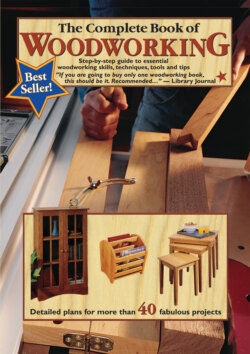Читать книгу Draw Manga - Tom Carpenter - Страница 8
На сайте Литреса книга снята с продажи.
Power & Lighting
ОглавлениеNearly every potential shop space will need electrical improvements. You may not need to go to pro-shop extremes, where each tool has a dedicated circuit. But avoid putting larger stationary tools (especially dust collectors) on a shared circuit. Since many larger stationary tools run on 230-volt service, it’s not a bad idea to run a 230-volt circuit for future use if you’re already updating the wiring.
There is a limit to the number of receptacles or fixtures you can hang on a circuit. A good rule of thumb is 8 to 10 lights or outlets per circuit. Rules and regulations are outlined in the National Electrical Code (NEC), but you should also consult your local city or county codes. Unless you have experience wiring, hire a licensed electrician for the job.
The best lighting for the shop is a balance of natural and artificial light and a balance of overall light and task light. Unfortunately, natural light is often hard to come by; many shops simply don’t have windows. One way to compensate for poor lighting is simply to do some basic cleanup and some painting with a light color. The walls and ceiling are the primary reflective surfaces, but a floor covered with light-colored enamel paint or vinyl tile will also make a big difference.
At minimum, you should have 20 foot-candles of lighting at floor level, throughout the shop: figure on providing at least one-half watt of fluorescent light or 2 watts of incandescent light for each square foot of shop floor (fluorescent lights are four to six times more efficient than incandescent and cast more uniform, shadow-free light). You’ll also need task lighting.
Wiring tips
∎ Separate lighting circuits from receptacle circuits. If you trip a breaker with a power tool, you don’t want to be left in the dark.
∎ Provide full power to a centrally located workbench through a floor-mounted receptacle or via a retractable cord suspended from the ceiling.
∎ Alternate the circuits from receptacle to receptacle. Or, wire each outlet of a duplex receptacle to a different circuit. That way, if you plug a power tool into one outlet and a shop vac into the other, then run both simultaneously, you’ll be drawing power from two circuits, rather than one.
∎ Ground-fault circuit interrupters (GFCIs) are required in garages, unfinished basements, outdoors, and locations near water.
An elaborate dust collection system is the hallmark of a serious woodworker. In this shop, each stationary tool has a dedicated hose and port that tie into the central vacuum ductwork.
